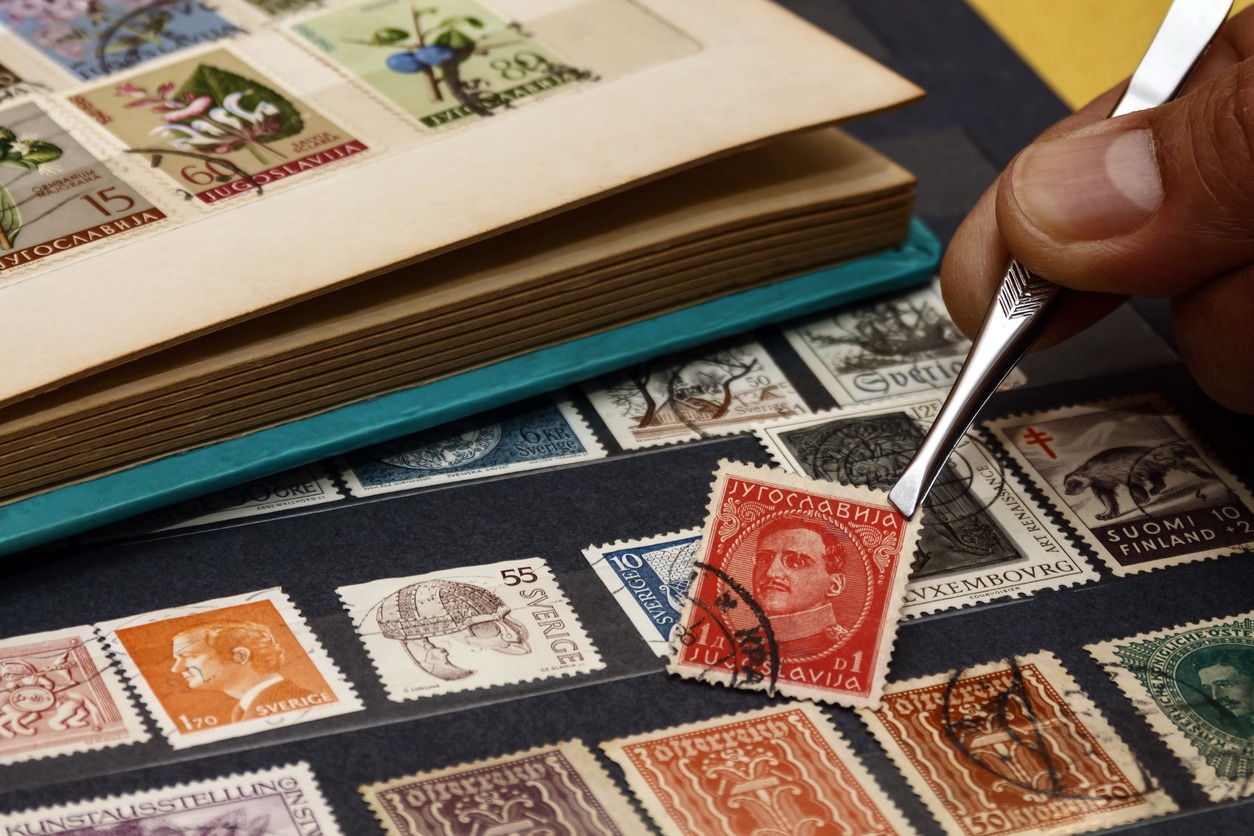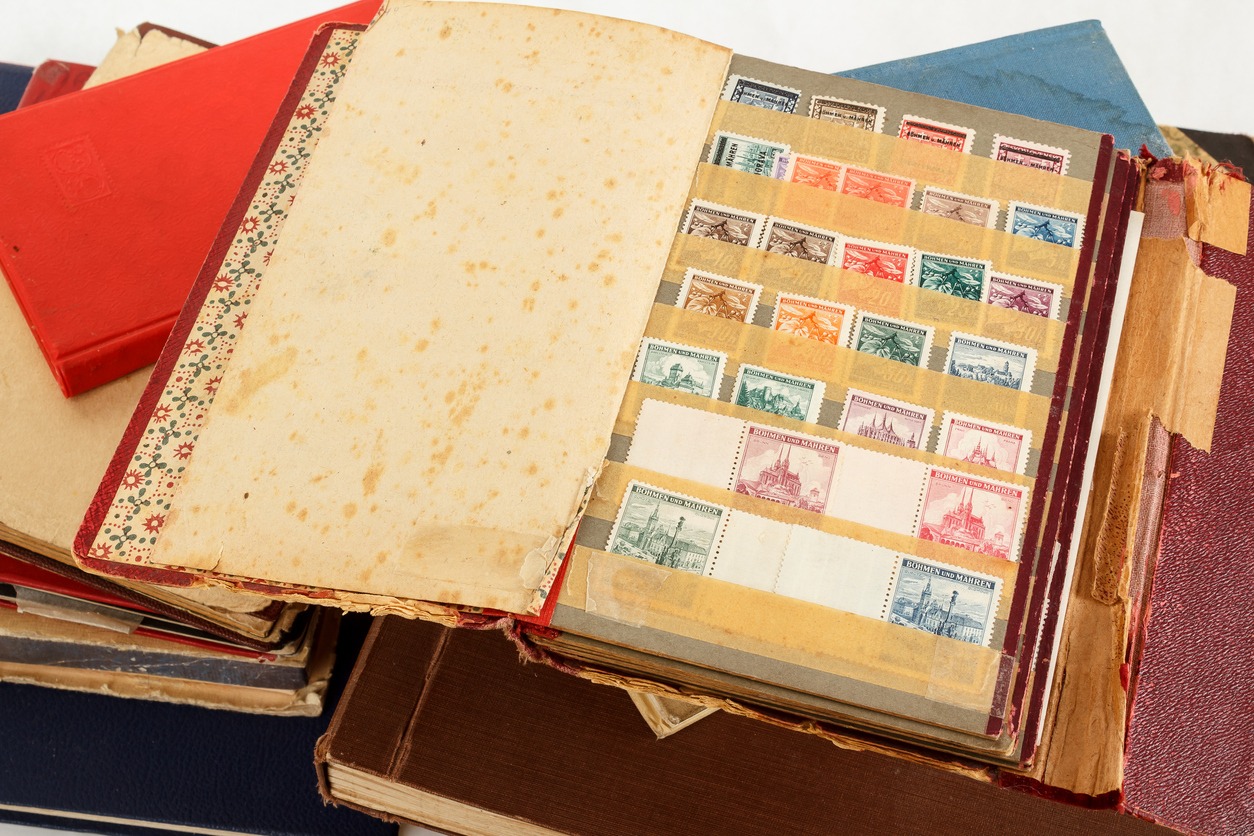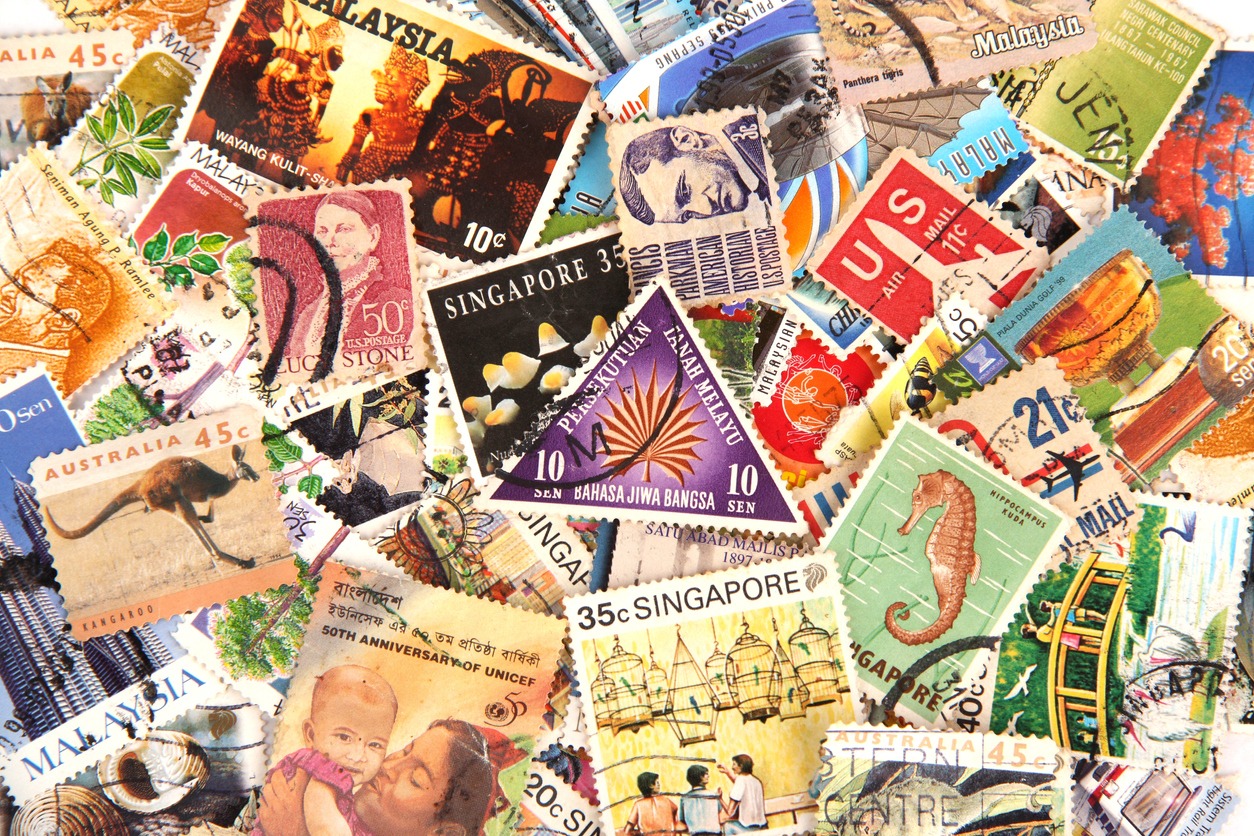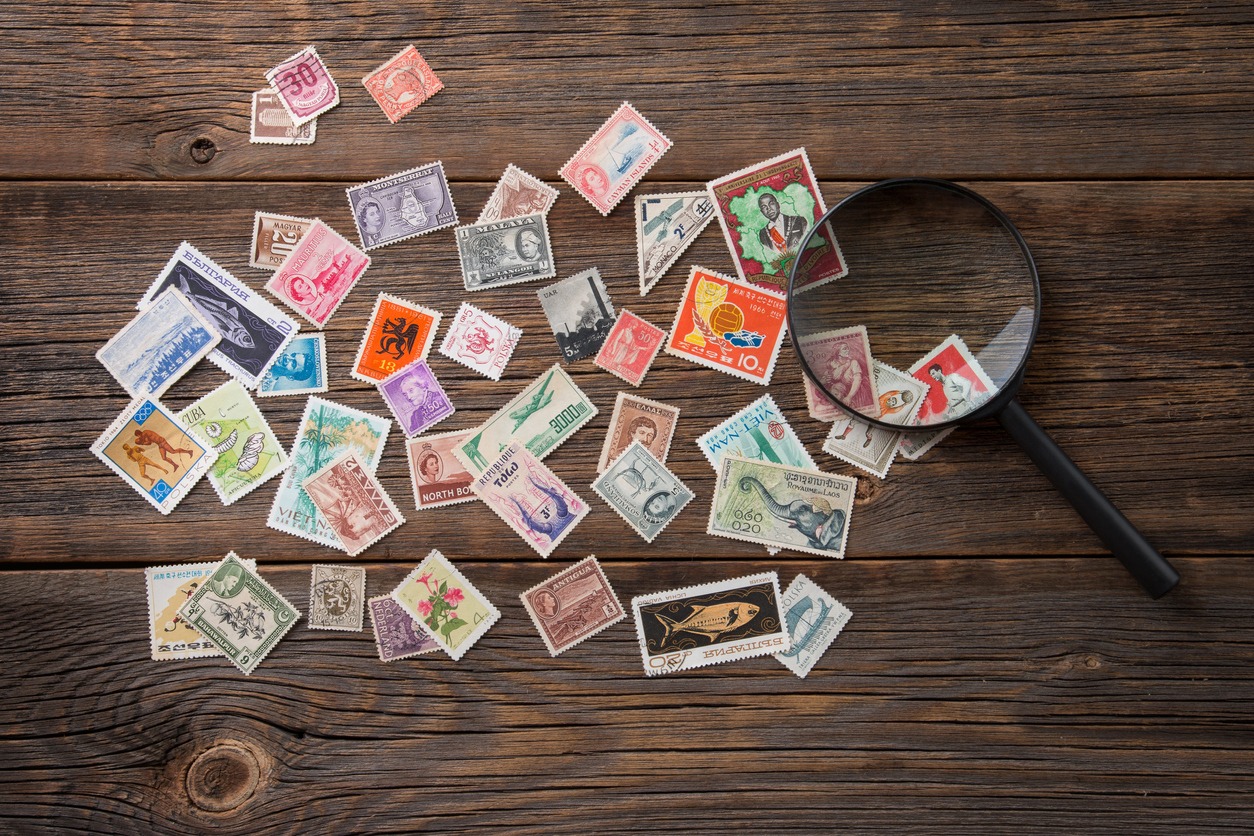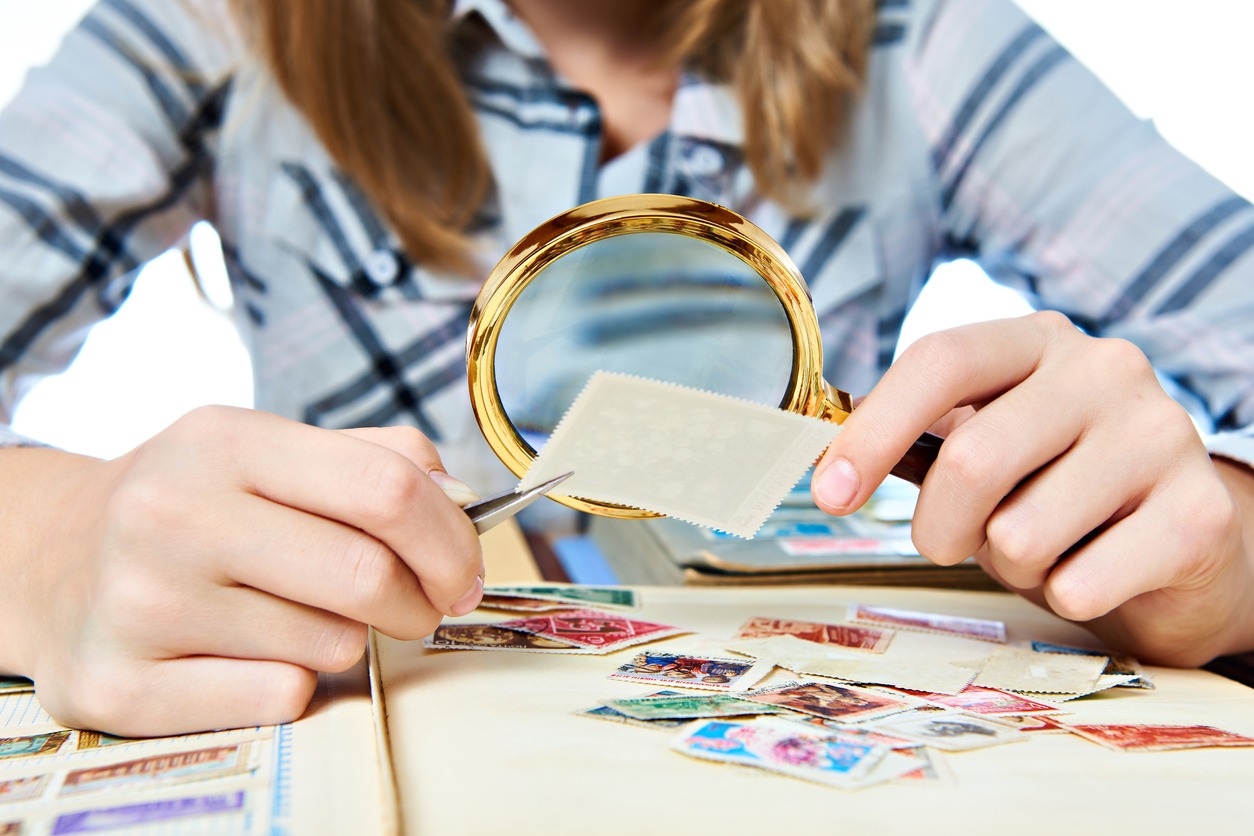Stamps go beyond mere postage—they open a window to different countries, cultures, and moments in history. A single stamp can showcase famous figures, iconic landmarks, pivotal events, or the unique flora and fauna of a specific region. Each stamp stands as a tiny work of art, often intricately crafted and splendidly printed.
Stamp collecting, or philately, is a time-honored hobby loved by people of all ages. It’s a captivating way to journey through history, culture, and geography using tiny bits of paper. Not only is collecting stamps a delightful pastime, but it also plays a role in preserving history.
Collectors are drawn to stamps because they offer a tangible link to days gone by. Holding a stamp in your hand is like clutching a piece of history. Stamp collecting lets us delve into the past of diverse nations and continents, discover significant moments in time, and gain insights into various cultures.
Plus, this hobby is very accessible. You don’t need to invest in costly sneakers or equipment to enjoy it.
If you want to venture into stamp collecting as a hobby, here’s a guide to help you start!
The History of Stamp Collecting
Origins of the Postage Stamp
Postmarks were the brainchild of Henry Bishop, who served as the Postmaster General of England. They made their debut at the London General Post Office in 1661, earning the nickname “Bishop Mark.” In 1680, William Dockwra and his partner Robert Murray launched the London Penny Post, which delivered letters and parcels within the city for just a penny. A hand stamp indicated that the postage had been paid, and this is widely regarded as the world’s first postage stamp.
Sir Rowland Hill, hailing from England, gets the credit for inventing the first modern adhesive postage stamp. He also established standardized postage rates based on weight. In 1840, these stamps made their debut in Great Britain’s Penny Post, featuring a Penny Black stamp with an engraved portrait of Queen Victoria. This design remained on the stamps for the next six decades, and the United Kingdom is unique in not including its name on postage, using the reigning monarch’s likeness instead.
The postage stamp and the mailing system quickly spread to other countries, each crafting their own versions and stamp designs. By 1847, the United States Postal Service issued its first postage stamps: five and ten-cent stamps bearing the images of Benjamin Franklin and George Washington. Like their British counterparts, early U.S. stamps were cut from sheets with scissors before perforated stamps were introduced due to high demand. Early stamps are often more valuable because of their rarity and fragility.
The U.S. even had two stamp-issuing bodies from 1860 to 1864, as the Confederate States established their own postal system. It wasn’t until 1874 that the Universal Postal Union was formed.
History of Stamp Collecting as a Hobby
The story of stamp collecting began with the world’s first prepaid postage stamp, the Penny Black, introduced in the U.K. in 1840. Since then, people have been captivated by the idea of collecting these functional works of art.
British zoologist John Edward Gray is considered the world’s first stamp collector. Collector organizations like The Royal Philatelic Society London and the American Philatelic Society have played a pivotal role in the hobby’s growth.
One coveted stamp from this era is the 1879-1883 3c stamp, known for its striking blue/green color and rarity, with fewer than 20 believed to exist and only 14 certified by the American Philatelic Society.
However, the most famous stamp among collectors is the 24c Inverted Jenny from 1918, a printing error that gave birth to modern stamp collecting when a full sheet of 100 was found in Washington D.C. It even made its way to the silver screen in the movie “Brewster’s Millions” with Richard Pryor. Individual Inverted Jenny stamps can fetch hefty sums at auctions, making them beloved among collectors.
Stamp collecting saw its heyday in the 1950s and 60s, with nearly 10% of the U.S. population collecting stamps at the time. The hobby continued to thrive into the 1970s, fueled by artistic-themed stamps and technology bringing the world closer.
As stamp collecting gained popularity in developing parts of Africa and Asia, places like India and China experienced explosive growth in interest, helping to spread the hobby globally.
While some collectors focus on collecting stamps from one country or look for tiny variations, thematic collecting is increasingly popular, with an endless array of topics to choose from.
Despite the influence of the digital age, stamp collecting remains relevant. Technology has made it more accessible, and stamps continue to serve as valuable educational tools, enriching discussions about history, geography, and culture in classrooms.
In a world dominated by email and social media, stamps may not be as common, but they remain important historical artifacts. With the help of technology, stamp collecting is evolving and staying connected to new generations of enthusiasts.
What Gives a Stamp Its Worth?
A stamp’s value hinges on several factors, such as its rarity, condition, age, and historical significance. Some stamps become exceedingly valuable due to printing mistakes or limited production. Take, for instance, the “Inverted Jenny” stamp from the United States in 1918, where an upside-down airplane was printed—making it one of the most coveted stamps for collectors.
Collectors also prize stamps with unique cancellations or postmarks, as these add extra historical context to the stamp. Postage stamps that saw use during noteworthy events or conveyed significant messages tend to command high value in the collector’s world.
Why Stamp Collecting Is a Fun Hobby?
Stamp collecting is often viewed as a relaxing and educational hobby. The excitement of seeking out a specific stamp, the satisfaction of uncovering a rare treasure, and the delight of arranging and displaying a collection can be immensely fulfilling. This hobby also encourages collectors to engage in research, expand their knowledge on various topics, and connect with fellow enthusiasts.
Here are some of the many reasons why stamp collecting is an enjoyable hobby:
It expresses individuality
Stamp collecting also serves as a means of personal expression. Some collectors focus on particular themes like animals, sports, or famous figures, while others pursue specialized collections, such as first-day covers or stamps from a specific era. With such a vast array of stamps available, there’s something to cater to every collector’s interests.
It allows you to explore history through stamps
Each stamp acts as a portal to a specific time and place in history. They bear witness to monumental events, renowned personalities, and cultural milestones. As collectors delve into the world of stamps, they unearth the stories behind these miniature marvels. Stamps transform into tangible relics that offer a glimpse into the past, creating a unique and personal link to historical moments.
It celebrates culture and diversity
Stamps act as cultural ambassadors, representing the diversity and richness of nations worldwide. They depict traditional attire, landmarks, flora, fauna, and iconic symbols associated with a particular country or region. Collecting stamps allows enthusiasts to savor the beauty of diverse cultures, fostering curiosity and respect for global diversity.
It’s a learning journey
Stamp collecting is an educational voyage that encompasses a wide range of subjects. Collectors acquire knowledge about geography, history, art, and even science by exploring stamps from different countries and eras. Each stamp holds a story waiting to be discovered, providing opportunities for research, learning, and broadening one’s understanding of the world.
For even more detailed information about your stamps, you can turn to handbooks. These resources often hold unique information that can’t be found elsewhere. Hundreds of philatelic handbooks are available for borrowing through your local library. If your library doesn’t have the book you need, you can request it through an inter-library loan from the National Philatelic Collection.
It fosters connection and community
Stamp collecting nurtures connections among like-minded individuals worldwide. Collectors can join clubs, attend exhibitions, and engage in trading activities to connect with fellow enthusiasts. This sense of community offers a platform for sharing knowledge, engaging in discussions, and building lifelong friendships with those who share a passion for philately.
It preserves history
One of the most significant aspects of stamp collecting is its contribution to preserving history. Stamps serve as artifacts documenting important events, cultural symbols, and technological advancements. They serve as visual records of a nation’s history, portraying how it has evolved.
Stamps are often issued to commemorate historical events or pay tribute to significant figures. By collecting and preserving these stamps, philatelists ensure that these stories remain etched in memory. Stamp albums serve as mini museums, safeguarding the past for future generations. They provide a tangible record of historical moments that might otherwise fade with time.
It’s affordable
For those considering starting a new collection, cost is often a big factor to think about. Stamp collecting stands out because it’s a hobby that’s accessible to people of all ages and income levels. Unlike many other collectibles that can demand a hefty investment, getting into stamp collecting doesn’t require much money.
You don’t need to break the bank to grow your collection. With millions of stamps available worldwide, you can acquire them at very reasonable prices and, in some cases, even for free. It’s entirely possible to build a substantial stamp collection without spending a fortune.
It doesn’t take much space
Another significant advantage of stamp collecting is its minimal space requirement. Unlike hobbies that demand extensive storage areas, stamp collecting can be comfortably accommodated in limited living space.
For beginners, a small album and a few stamps can easily fit on a bookshelf or desk. As your collection grows, you may opt for a larger album, but stamp collections, in general, remain space-efficient. This makes stamp collecting an ideal choice for those with limited room to spare.
It’s an investment potential
Lastly, many people are drawn to stamp collecting because of its investment potential. As mentioned earlier, certain rare stamps can fetch incredibly high prices, with some reaching values of over $4 million.
This has prompted many new collectors to view stamps not just as a hobby but as a potential investment. They focus on acquiring rare or unusual stamps with the intention of selling them later at a profit. When approached wisely, investing in stamps can indeed prove to be a financially rewarding venture.
How to Start Your Stamp Collection
If you’re intrigued by the world of stamp collecting and eager to start your own collection, here are some simple steps to help you get started:
Educate yourself
Start by learning the basics of stamp collecting. Dive into books, join online forums, or attend stamp exhibitions to understand the various types of stamps and their values.
As you collect stamps from various countries, you’ll naturally learn about geography. Consider getting an atlas, globe, or world map to help you locate the countries that issued the stamps in your collection.
Choose a focus
Decide on a theme or area of interest for your collection. It could be a specific country, a particular historical period, or a theme like animals, sports, or famous personalities.
Some collectors opt for stamps that aren’t from a specific country but share a unique characteristic, like unconventional shapes or items that aren’t technically stamps, known as “cinderellas.”
Many collectors organize their collections around specific topics, such as birds, famous individuals, art, crafts, or countless other subjects.
Acquire stamps
Start building your collection by acquiring stamps through various means. You can purchase stamps online, visit local stamp shops, or even participate in stamp auctions. Another exciting way to get stamps is by trading with fellow collectors.
Handle stamps with care
If you receive stamps in the mail or from a local business, you must remove them from envelopes. Soaking stamps off the remnants of envelopes is a common practice. Simply soak them in cool water for around 15 to 20 minutes until they float free from the paper. Be cautious with stamps that have purple ink or cancellations, as these colors may run and affect other stamps.
Invest in supplies
Purchase stamp albums, stamp tongs, hinges, and other supplies to properly organize and protect your stamps. It’s essential to handle stamps gently and create a suitable environment to preserve their condition for years to come.
Connect with fellow collectors
Join local stamp-collecting clubs or online communities to connect with other collectors. Sharing experiences, knowledge, and resources with fellow enthusiasts can enrich your stamp-collecting experience.
Subscribe to philatelic magazines
Depending on your collecting interests, you may want to subscribe to philatelic magazines that cover your chosen topics. These publications keep you informed about the latest developments and discoveries in the world of stamps.
Stay curious
Stamp collecting offers a vast realm of information and enjoyment. If you collect stamps based on a specific theme or area, look for specialized stamp clubs that focus on your interests.
Remember, the primary reason for collecting stamps is to have fun! Enjoy your journey into this fascinating hobby and the discoveries it brings your way.
How to Identify Stamps
Identifying stamps correctly is vital when evaluating their value and place in your collection. Here are some key steps to follow:
- Country and date: Start by determining the country of origin and the date of your stamp. Most stamps feature this information on them. For U.S. postage stamps, the Scott Specialized Catalogue is a valuable resource.
- Inscriptions: Some stamps may not clearly display the country and currency but may have inscriptions like letters, words, or numbers as part of their design. A quick internet search for the inscription on your stamp can help identify its country of origin. For example, stamps from Peru may have “a cert” written on them.
- Watermarks: Watermarks are often found on the paper used for stamp printing. You can detect watermarks using watermark fluid. Place your stamp face down in a watermark tray, add a few drops of fluid, and wait for it to dry. Once dry, examine the designs, letters, numbers, and pictorial elements of the watermarks to help identify the stamp’s origin. Major stamp catalogs provide listings for stamps with similar designs printed on papers with different watermarks.
Note: Not all stamps are printed on watermarked paper, and those issued after 1917 typically do not have watermarks. The last U.S. postage stamps with watermarks were issued in 1938, so watermarks can help determine the age of your stamp.
How to Evaluate the Quality of a Stamp
Stamp condition is a crucial factor in assessing its value. Poorly preserved and damaged stamps are less valuable compared to well-preserved ones. Here’s how to evaluate stamp quality:
- Superb: A stamp labeled as “superb” is of the highest quality. It has perfect centering, vibrant color, and flawless gum. Even used stamps can be “superb” if they are perfectly centered, have a fresh appearance, light cancels, and no damage.
- Fine: A “fine” stamp is one without significant flaws, with average centering and gum showing light hinge marks. Used stamps labeled “fine” are less fresh, with heavier cancels, but still have good centering.
- Good: Stamps labeled as “good” are off-center but reasonably attractive. They may have minor defects like disturbed gum, thin areas, or heavy hinge marks. Stamps below these standards are best avoided by serious collectors and are often referred to as “space fillers.”
When handling stamps, it’s essential to use caution since they are delicate. Stamp tongs, with smooth ends, are the safest way to pick up stamps without damaging them.
To closely examine stamps and distinguish between similar ones, consider using magnifying glasses, which come in various shapes and sizes. They help you see intricate details and can turn you into a stamp-collecting detective, enhancing your knowledge and skills in the hobby.
Conclusion
Stamp collecting is not only a rewarding and educational hobby but also a way to preserve history. Each stamp represents a unique piece of the past, allowing us to explore different countries, commemorate significant events, and appreciate the beauty of art. By collecting and preserving stamps, we ensure that the stories they carry endure for generations to come.
If you’re looking for a hobby that connects you with the past, sparks your curiosity, and offers endless exploration, consider stamp collecting. And if you’re visually creative and can make great drawings as well, you can try animating as a hobby, too!
Start your collection today and embark on a journey through time, one stamp at a time.
